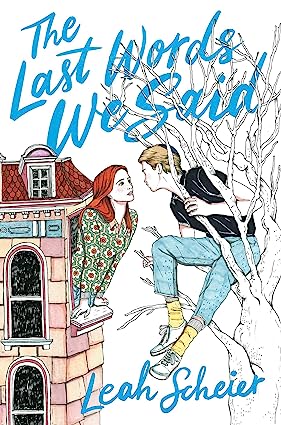
We welcome back Heather J. Matthews today! Heather's focus on representation--especially concerning Judaism--can help classroom teachers consider how their own students can critically examine whole-class or independent texts.
Dr. Matthews is an assistant professor of literacy at Salisbury University. She specializes in diverse representation within children’s and young adult literature. Heather can be reached at [email protected].
I have been obsessed with the idea of the Bechdel test for a long time, and would highly encourage you, dear reader, to play around on the Bechdel test’s website to check for your favorite movie. I think you may be surprised.
But what does this have to do with young adult literature? While I assumed that the Bechdel test is well known, I assume that the subsequent representation tests which examine other identity aspects are not. There are a multitude of other media representation tests like the Bechdel test, which you likely haven’t heard of – for example, the Waithe test, which requires that Black women who must 1) be in a position of power, and 2) is in a healthy romantic relationship (Wide Angle Youth Media, 2020). There are tests for gender, sexuality, race, ability, ethnicity and religion, as well as other identity aspects and identifiers. Of importance for this blog post is the Josephs test, which seeks to examine representation of Orthodox Jews (Levy, 2021).
For those who are not in the know of Judaism and its spectrum of beliefs, let me give you a quick and dirty overview: There are many denominations, or streams, of Judaism. However, three streams are more well-known due to their population size and/or visibility. These streams can be imagined on a linear spectrum from more to less observant of the practices of Judaism. On one end of the spectrum is Reform Judaism, which tends towards liberal observation of practices – Reform Jews tend to be less observant of ceremony, and tend to allow for exceptions and modernization in practices. In the middle of the spectrum is Conservative Judaism, which has some Reform aspects (for example, women can be rabbis) but also follows tradition and ceremony more closely than Reform Judaism (for example, attending religious services more often). On the other end of the spectrum is Orthodox Judaism, which tends to be stricter in terms of the ways in which Judaism is practiced on a daily basis; dietary rules, gender rules, dress rules, and other religious rules are closely followed. Because Orthodox Jews are most visible due to clothing and hair practices, they tend to attract the most attention in public and in the media.
With this in mind, the Josephs test deals specifically with Orthodox Judaism representation. Like the Bechdel test, there are several requirements that a piece of media must pass through to pass or fail: 1) Are there any Orthodox characters who are emotionally and psychological stable, 2) Are there characters who are Orthodox whose religious life is a characteristic but not a plot point or problem, 3) Can the Orthodox character find their Happily Ever After as a religious Jew, and 4) If the main plot points are in conflict due to religious observation, have any of the writers done the research required (Levy, 2021). While I would posit that the Josephs test can, and should, apply to all Jewish representation, the test’s origins specifically name Orthodoxy, and so this blog post will focus specifically on Orthodox Jewish representation in young adult literature.

Here is where the Josephs test comes in. Does The Chosen pass the Josephs test? Well, it really depends on who you ask. In regards to question 2 (is the religious life of the character a characteristic instead of a plot points), there is a major stumbling block. Both of the main characters, Reuven and Danny, are Orthodox Jews, but the entire story of The Chosen revolves around their embracing or rejecting Jewish practices and beliefs, to the point where family ties are tested and expectations comes short for most of the involved characters. In fact, by the end of the book, dual protagonist Danny has rejected the external markers of his Jewish practice by cutting his hair and beard. This symbolic rejection of his Jewish practices is the ending of a built up tension which dominated the entire plot of the novel.
I would like to leave these answers up to you, and highly encourage you to seek out and read these books. I would also encourage you to critically examine the next Orthodox Jewish character you come across in media, and ask yourself about if this character would pass through the Josephs test – more likely than not, as the television show Nurses episode “Achilles Heel” proves, the answer will be no.
References:
Bechdel Test. (n.d.). Bechdel Test Movie List. https://bechdeltest.com/
Blum, I. (2022). The life and crimes of Hoodie Rosen. Philomel Books.
Scheier, L. (2021). The last words we said. Simon Pulse.
Levy, Y. (2021). Want to represent Orthodox Jews accurately? Take this test before production begins. Jew in the City. https://jewinthecity.com/2021/03/want-to-represent-orthodox-jews-accurately-take-this-test-before-production-begins/
Potok, C. (1967). The Chosen. Simon & Schuster.
Shafer, E. (2021). NBC removes ‘Nurses’ episode from digital platforms following backlash over Orthodox Jewish storyline. Variety. https://variety.com/2021/tv/news/nbc-removes-nurses-episode-backlash-orthodox-jewish-storyline-1234914536/
Wide Angle Youth Media. (2020). Media tests for diversity and representation. Wide Angle Youth Media. https://www.wideanglemedia.org/blog/media-tests



 RSS Feed
RSS Feed